
Jaipur, fondly known as the “Pink City,” is a breathtaking blend of royal heritage, vibrant culture, and architectural brilliance. The city is adorned with majestic forts like the Amber Fort, which stands proudly atop a hill, offering panoramic views of the surrounding landscapes. The intricate design of the Hawa Mahal, or Palace of Winds, with its hundreds of small windows, is a testament to Jaipur’s rich history. The sprawling City Palace, a fusion of Mughal and Rajput architecture, invites visitors to explore its grand courtyards, museums, and palatial interiors. Strolling through the bazaars of Jaipur, you’ll be enchanted by the colors of traditional textiles, handicrafts, and jewelry that reflect the city’s artistic spirit.
Jaipur is also a city of deep spiritual significance, with stunning temples like the Birla Mandir, dedicated to Lord Vishnu, and the Govind Dev Ji Temple, where devotees gather in large numbers to offer prayers. The city’s cultural richness extends to landmarks like the Jantar Mantar, an astronomical marvel, and the serene Jal Mahal, a palace floating in the middle of Man Sagar Lake. Whether you’re exploring the vibrant streets, visiting its historic forts, or seeking peace in its temples, Jaipur offers a perfect mix of tradition, beauty, and history, making it an unforgettable destination for travelers.
Lets Visit Jaipur and Know More...
Forts
Amer Fort (Amber Fort)
Amer Fort, also known as Amber Fort, is a magnificent historical fort located in Amer, a small town about 11 km from Jaipur, Rajasthan. Built by Raja Man Singh I in 1592, it is a stunning blend of Hindu and Mughal architecture, made of red sandstone and marble. The fort is known for its large ramparts, series of gates, and cobbled paths. It overlooks the Maota Lake, adding to its beauty and charm.
Architectural Beauty of Amer Fort: Sheesh Mahal (Mirror Palace): The most famous section of the fort, Sheesh Mahal, is a dazzling hall adorned with intricate mirror work. Even a small flame can light up the entire hall due to the reflection of thousands of tiny mirrors. Diwan-i-Aam (Hall of Public Audience): This hall, with its intricately carved pillars and beautiful mosaic patterns, was used by the king to address the public. Diwan-i-Khas (Hall of Private Audience): This was reserved for private meetings and features beautiful floral carvings. Sukh Niwas: A charming section with marble inlay work and a cooling system that provided respite from the scorching heat using a natural water flow. Ganesh Pol: A grand gateway with intricate frescoes and paintings of Lord Ganesh. Courtyards and Gardens: The fort features several courtyards and a picturesque garden in the Aravalli hills, providing breathtaking views of the surroundings.


Jaigarh Fort
Jaigarh Fort is a stunning and historically significant fort located on the Cheel ka Teela (Hill of Eagles) of the Aravalli range, overlooking the Amber Fort and the Maota Lake in Jaipur, Rajasthan. Built in 1726 by Maharaja Sawai Jai Singh II, it was primarily designed to protect the Amber Fort and the city of Jaipur from invasions. The fort is known for its massive walls, intricate architecture, and well-preserved military structures. Architectural Marvel: Jaigarh Fort’s architecture is an excellent example of Indo-Persian style, featuring rugged exteriors with intricate interior details. It is built with red sandstone, and its walls extend over 3 kilometers. The fort houses various palaces, temples, and granaries, reflecting the grandeur of the Rajput rulers. Jaivana Cannon: One of the major attractions of Jaigarh Fort is the Jaivana Cannon, considered the world’s largest cannon on wheels. Though it was never fired in any war, its sheer size and historical significance make it a must-see. Panoramic Views: The fort offers breathtaking panoramic views of the surrounding landscape, including Amber Fort, Maota Lake, and the lush green Aravalli hills. The high vantage points make it an excellent place for photography and sightseeing. Water Conservation System: Jaigarh Fort has an advanced rainwater harvesting system that allowed it to store water for a long period. The fort’s reservoirs are still functional and are a testament to the engineering skills of that era. Museum and Armory: The fort has a museum showcasing the history and artifacts of the Rajput rulers, including swords, shields, armor, and photographs. The armory is another key attraction, displaying a wide range of ancient weapons. Temples: Within the fort, there are several temples, such as the Ram Harihar Temple and the Kal Bhairav Temple, which add a spiritual touch to the historical site.
Nahargarh Fort
Nahargarh Fort stands majestically on the Aravalli Hills, overlooking the city of Jaipur. Built in 1734 by Maharaja Sawai Jai Singh II, it was initially constructed as a retreat and a defense fort to safeguard Jaipur. The name “Nahargarh” means “Abode of Tigers,” and the fort certainly lives up to its name with its rugged location and stunning views of the sprawling pink city below. Madhavendra Bhawan: This is a palace within the fort, constructed by Sawai Madho Singh in the 19th century. It has 12 identical suites for the queens and a suite for the king, all connected through corridors. The rooms are adorned with murals, delicate frescoes, and fine carvings. Panoramic Views: The fort provides a sweeping view of Jaipur’s skyline, especially beautiful at sunset. From the terrace, you can see the city sprawled out below, with its pink-hued buildings and lively streets. The sight of Jaipur lighting up at night from Nahargarh Fort is an unforgettable experience. Step Wells: Nahargarh Fort is also famous for its impressive step wells, which were used to store water during the dry seasons. These well-engineered structures are as aesthetically pleasing as they are functional. Café and Museum: Within the fort, there’s a restaurant and café where visitors can relax and soak in the historic ambiance. The fort museum displays various historical artifacts that give insights into the royal lifestyle of Rajasthan.

Places to Visit
Hawa Mahal
Hawa Mahal, one of Jaipur’s most iconic landmarks, is a stunning blend of Rajput and Mughal architecture. Built in 1799 by Maharaja Sawai Pratap Singh, this five-story palace is famous for its unique structure and purpose, making it a must-see destination for travelers. The Hawa Mahal, constructed from red and pink sandstone, beautifully complements Jaipur’s “Pink City” aesthetic. Its name, which translates to “Palace of Winds,” refers to the numerous windows (called jharokhas) designed to allow the breeze to flow through the structure, keeping it cool in the scorching heat of Rajasthan.


City Palace
The City Palace in Jaipur is one of the most famous landmarks of Rajasthan and a spectacular example of the grandeur and elegance of Rajput architecture. Built by Maharaja Sawai Jai Singh II in the early 18th century, the City Palace was not just the seat of the Maharaja but also a cultural and political center for the state of Jaipur. Even today, a part of the palace remains the royal residence of the Jaipur royal family. The City Palace showcases a brilliant fusion of Rajput, Mughal, and European architectural styles, reflecting the opulence and craftsmanship of its time. Spread across a vast area, the palace complex consists of several buildings, courtyards, gardens, and museums.
Jantar Mantar
Jantar Mantar in Jaipur is a remarkable astronomical observatory built by Maharaja Sawai Jai Singh II in 1724. It is one of the five observatories constructed by him across India, with the most significant and best-preserved one located in Jaipur. Recognized as a UNESCO World Heritage Site, Jantar Mantar is an outstanding example of ancient Indian science and astronomy, blending precise architectural structures with astronomical insights. Maharaja Sawai Jai Singh II, the founder of Jaipur, was an avid astronomer and mathematician. He built Jantar Mantar with the aim of improving the accuracy of astronomical calculations, such as the positions of celestial bodies and local time. Using a combination of Ptolemaic and Indian astronomy, the observatory was designed to assist with astrological predictions, agricultural planning, and even setting festival dates.
The name “Jantar Mantar” is derived from the Sanskrit words “Yantra” (instrument) and “Mantra” (calculation), indicating its function as a place for astronomical measurements.
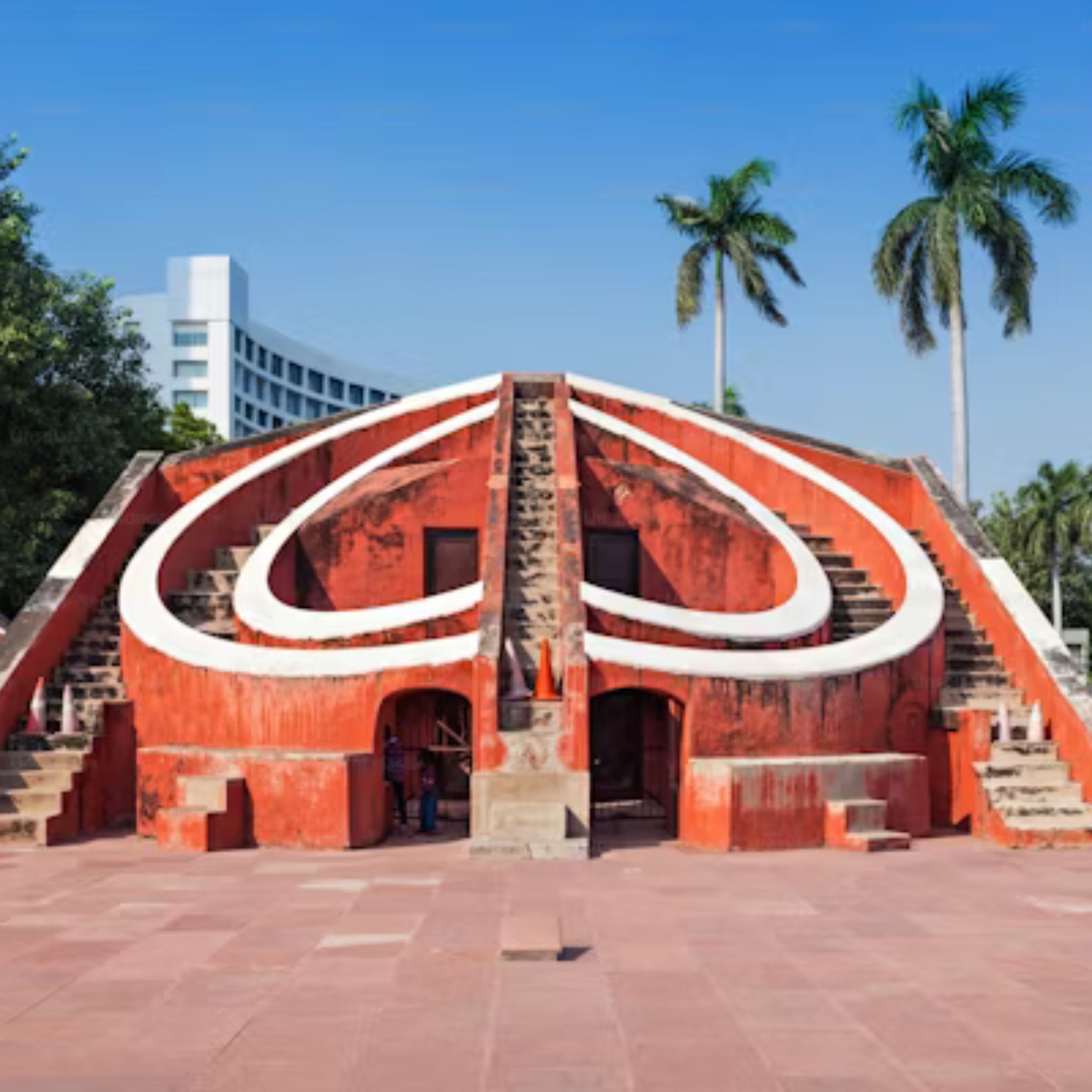

Jal Mahal
Jal Mahal, or the “Water Palace,” is one of Jaipur’s most captivating and serene architectural marvels. Situated in the middle of the Man Sagar Lake, this palace offers a stunning contrast to the arid landscape of Rajasthan, appearing almost like it’s floating on water. Built as a leisure retreat, Jal Mahal is a unique example of Rajput and Mughal architecture. Jal Mahal was originally built in 1699 and later renovated and expanded by Maharaja Sawai Jai Singh II in the 18th century. It was constructed as a summer retreat for the royal family and also served as a hunting lodge during the monsoon season. The surrounding lake was artificially created by damming the Dharbawati River to store water.
Albert Hall Museum
The Albert Hall Museum, also known as the Government Central Museum, is the oldest museum in Rajasthan and a magnificent example of Indo-Saracenic architecture. Situated in Ram Niwas Garden in the heart of Jaipur, it was opened in 1887 and named after Albert Edward, the Prince of Wales, who later became King Edward VII. The building’s Indo-Saracenic architectural style is a blend of Islamic, Persian, and Indian influences. Designed by Sir Samuel Swinton Jacob, the museum stands as an architectural marvel with its ornate arches, domes, and detailed stonework, symbolizing the grandeur of the British colonial era and Rajasthani aesthetics.
The museum is built from sandstone and has intricate carvings that adorn the façade, with balconies, towers, and pavilions that reflect the regal charm of the city. The overall design, including its open courtyards and high ceilings, allows plenty of natural light and ventilation, making it a pleasurable space to explore.
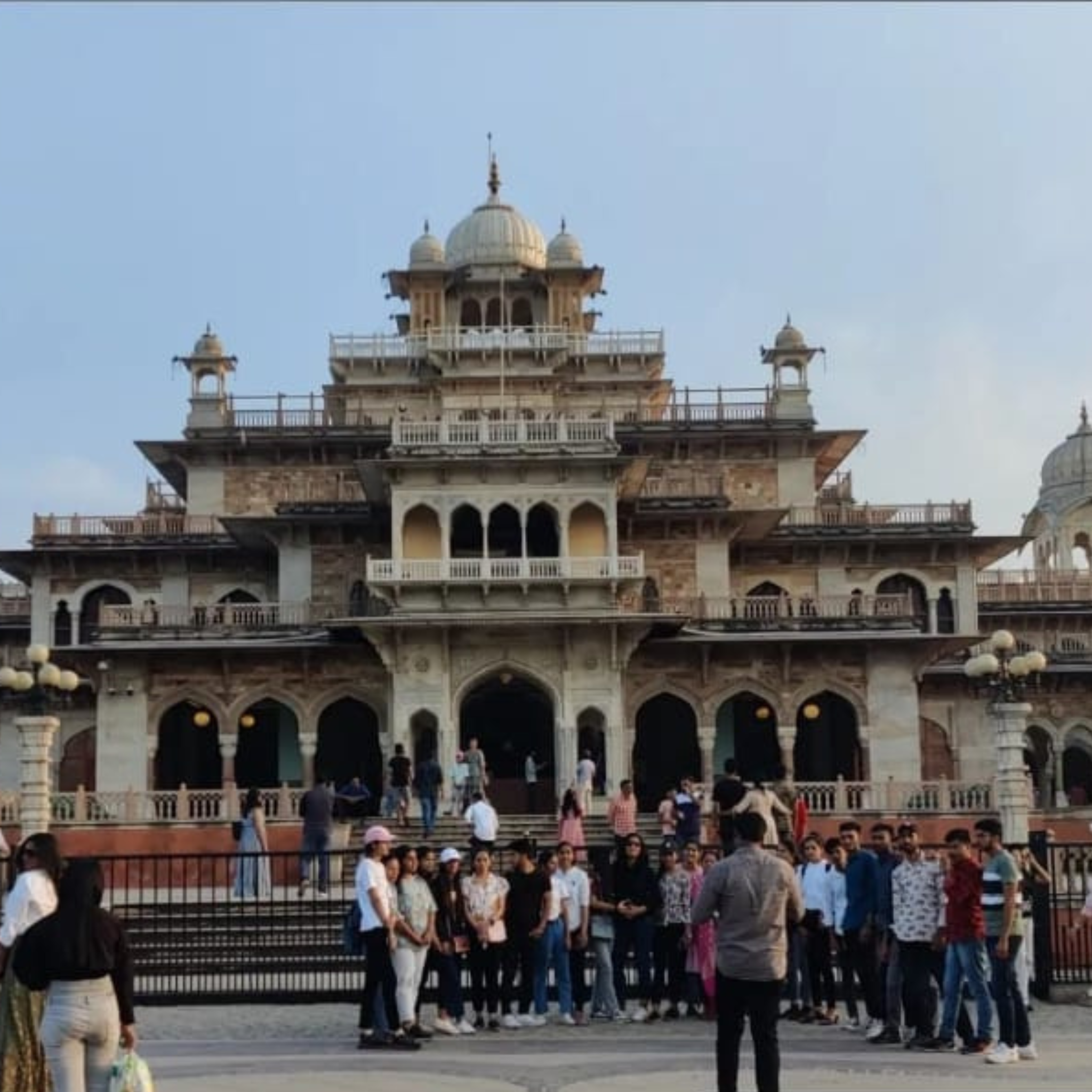

Gaitor ki Chattriyan
Gaitor Ki Chattriyan, also known as the Royal Gaitor Cenotaphs, is a serene and beautiful site located just outside the hustle and bustle of Jaipur. Situated at the base of the Nahargarh hills, this lesser-known attraction is a royal cremation ground for the Kachwaha Rajput kings and their families. The site is famous for its intricately carved cenotaphs (chhatris), which are small domed structures built in honor of the royal family members.
The Royal Cenotaphs were constructed to honor the memory of the rulers of Jaipur, from Maharaja Sawai Jai Singh II, the founder of Jaipur, to the later Kachwaha kings. It’s believed that Gaitor was selected by the royals as their final resting place due to its tranquil and scenic location.
The cenotaphs are built in traditional Rajput style, blending Mughal and Hindu architectural elements. Each chhatri represents a memorial to a specific ruler, and the level of decoration and intricacy often reflects the importance of the ruler being commemorated.
Isarlat (Sargasuli Tower)
Isarlat, also known as Sargasuli Tower, is a striking historical monument located in the heart of Jaipur. This 7-story minaret was built in 1749 by Maharaja Sawai Ishwari Singh, and it serves as an iconic structure that offers a bird’s-eye view of the bustling city. The name “Sargasuli” translates to “Tower of Heaven,” reflecting its grandeur and height. The Sargasuli Tower was constructed to commemorate Maharaja Ishwari Singh’s victory over his rivals. Legend has it that after securing his kingdom, the Maharaja wanted to create a monument that symbolized his power and success. The tower was designed in the Rajput-Mughal architectural style and quickly became a prominent symbol of Jaipur’s rich history.
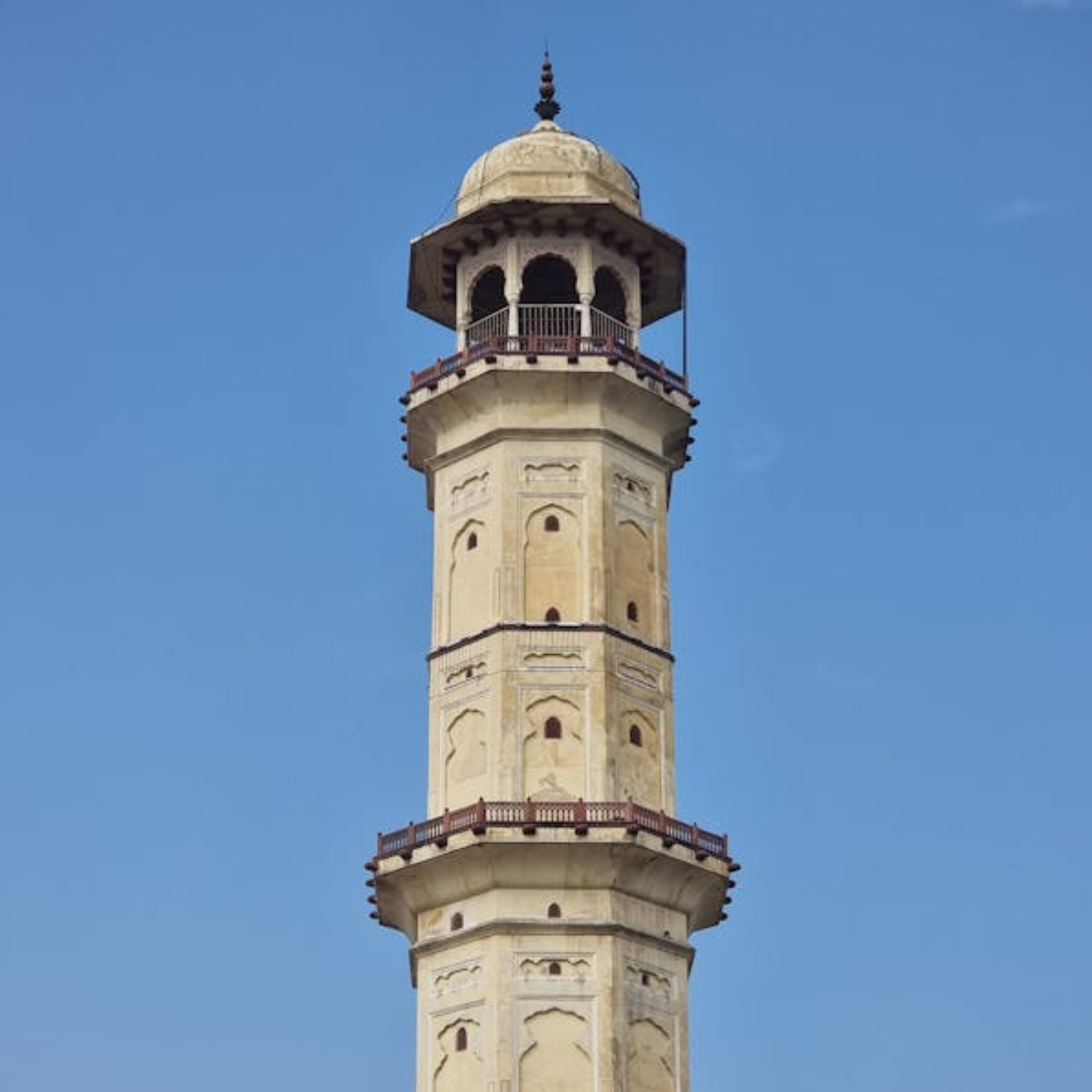

Kanak Vrindavan
Kanak Vrindavan is a beautiful garden located at the foot of the Nahargarh Hills, near Amber Fort in Jaipur, Rajasthan. It is a serene and lush green garden that combines elements of both Mughal and Rajput architecture, making it a popular spot for tourists and locals alike. It’s an ideal spot for those looking to escape the city’s hustle and immerse themselves in a peaceful, green environment while enjoying some of Jaipur’s rich history and culture.
Ram Niwas Garden
Ram Niwas Garden is a historic public garden located in the heart of Jaipur, Rajasthan. Built in 1868 by Maharaja Sawai Ram Singh, it covers a vast area and serves as a popular recreational space for locals and tourists alike. Ram Niwas Garden is a peaceful and scenic spot in Jaipur, blending natural beauty with cultural richness. It’s an excellent place for tourists who want to experience the historic and cultural essence of the city.


Sisodia Rani Ka Bagh
Sisodia Rani Ka Bagh is a beautiful garden located in Jaipur, Rajasthan. It was built in 1728 by Maharaja Sawai Jai Singh II as a symbol of his love for his second queen, Sisodia Rani, who hailed from Udaipur. The garden reflects the royal heritage of Jaipur and is a blend of Mughal and Rajput architecture. Located about 10 km from the center of Jaipur, Sisodia Rani Ka Bagh is a peaceful retreat away from the city’s hustle. It is an ideal place for visitors who want to experience the historical charm and beauty of Rajasthan.
Panna Meena Kund
Panna Meena Ka Kund, also known as Panna Meena Stepwell, is an ancient stepwell located near the famous Amer Fort in Jaipur, Rajasthan. This 16th-century structure is a beautiful example of traditional Indian architecture and engineering, built during the reign of the Rajput rulers. It’s a must-visit for those interested in history, architecture, and Rajasthan’s rich heritage.


Chand Baori
Chand Baori is an ancient stepwell located in the village of Abhaneri, around 95 kilometers from Jaipur, Rajasthan. It is one of the largest and most stunning stepwells in India, showcasing impressive architecture and serving as a historical landmark. Its blend of architecture, history, and mystique makes Chand Baori a must-visit when exploring the heritage sites near Jaipur.
Samode Palace
Samode Palace is a magnificent heritage palace located about 40 kilometers from Jaipur, in the village of Samode, Rajasthan. The palace is an architectural marvel, blending traditional Rajasthani and Mughal styles. Originally built as a fort in the 16th century by the noble family of Samode, it was later converted into a palace in the 19th century by the Rawals of Samode. Samode Palace has a rich history linked to the rulers of the region and their association with the Rajput royal courts. The palace showcases the opulence and grandeur that was characteristic of Rajasthan’s royal heritage.

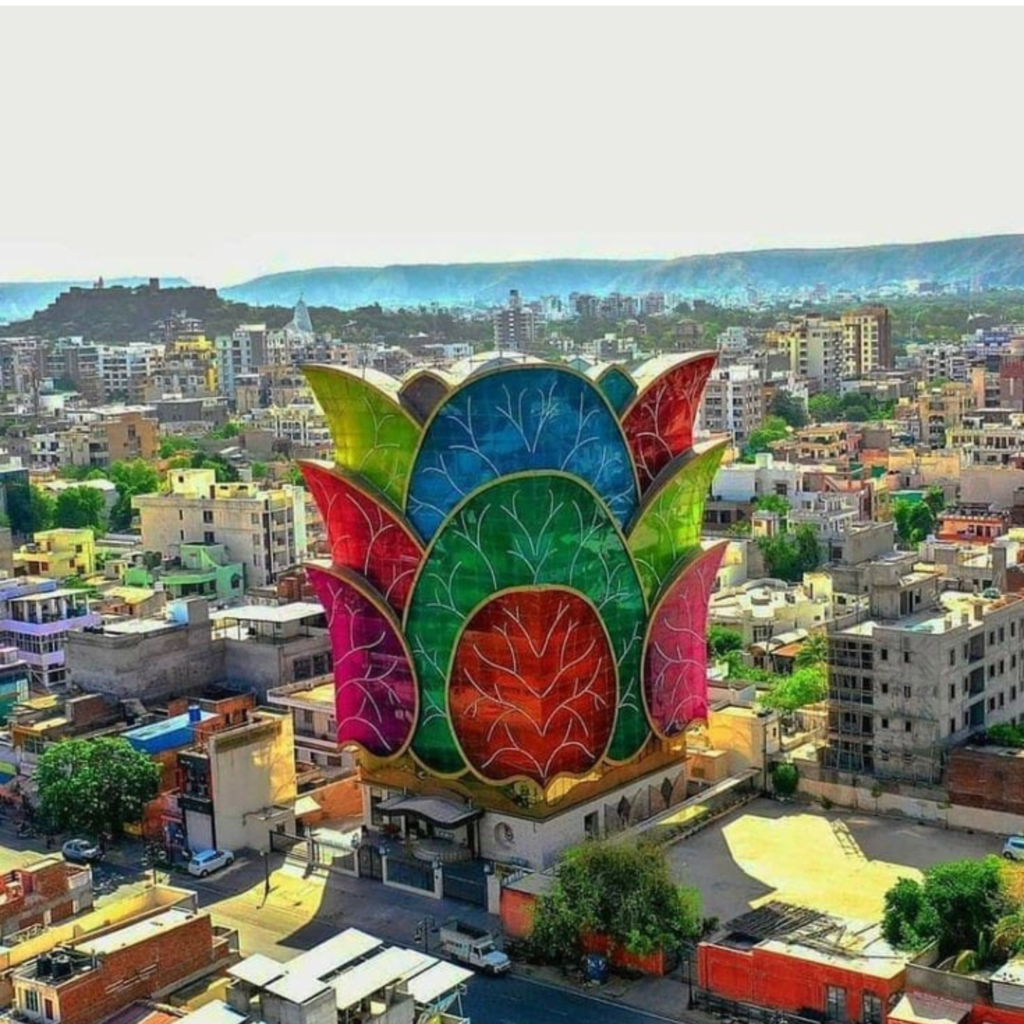
Tonk Road Cenotaphs
The Tonk Road Cenotaphs in Jaipur are a collection of historical memorials located along Tonk Road, a major highway in Jaipur, Rajasthan. These cenotaphs, known as Chhatris, are a form of Rajput architecture built to honor deceased members of royal families or significant figures. The term “Chhatri” literally means “umbrella,” and the structures are designed with dome-shaped canopies, often supported by intricate pillars, which give them their iconic look. The Tonk Road area, in general, is also known for connecting important landmarks in Jaipur, and these cenotaphs contribute to the region’s heritage tourism.
Anokhi Museum of Hand Printing
The Anokhi Museum of Hand Printing, located in Jaipur, Rajasthan, is dedicated to preserving and promoting the traditional craft of hand block printing. Situated in a restored haveli (mansion) in the historic Amber region, the museum showcases the history, techniques, and significance of hand printing, a centuries-old art form in India. The Anokhi Museum of Hand Printing is a must-visit for those interested in traditional textiles, crafts, and the rich cultural history of Rajasthan.


Statue Circle
Statue Circle is one of the prominent landmarks in Jaipur, located at the junction of several key roads in the heart of the city. It is named after the statue of Maharaja Sawai Jai Singh II, the founder of Jaipur, which stands at the center of the circle. The statue, made of white marble, depicts the Maharaja holding an astrological chart, a nod to his passion for astronomy and his contributions to the city’s architectural planning.
Maharani Ki Chhatriyan
Maharani Ki Chhatriyan is a significant historical site located in Jaipur, Rajasthan, India. It is a royal crematorium dedicated to the queens of Jaipur, and the word “Chhatriyan” refers to the cenotaphs or memorials that mark the cremation sites of the queens. The site may not be as well-known as some of the more famous monuments in Jaipur, like the City Palace or Hawa Mahal, but it holds great cultural value for those interested in the royal history of Rajasthan.


Sambhar Lake
Sambhar Lake, located near Jaipur in the Indian state of Rajasthan, is the largest inland saltwater lake in India. It spans around 230 square kilometers and is a critical area for salt production. The lake plays a significant role in the local economy, providing salt to much of India, with salt production dating back over a thousand years. Sambhar Lake provides a fascinating mix of natural beauty, industrial significance, and ecological importance, making it a must-visit spot for those traveling in Rajasthan.
Galta Ji Temple (Monkey Temple)
Galta Ji Temple, also known as the Monkey Temple, is a historic pilgrimage site located on the outskirts of Jaipur, Rajasthan, India. Nestled in a narrow crevice in the Aravalli Hills, the temple complex is a unique blend of natural beauty, religious significance, and rich architectural heritage. The serene environment, combined with the historical and religious importance of Galta Ji Temple, makes it a popular destination for both devotees and tourists visiting Jaipur. The natural beauty of the area, along with the presence of playful monkeys, adds a unique charm to the experience.


Garh Ganesh Temple
Garh Ganesh Temple is a historic and revered Hindu temple located in Jaipur, Rajasthan. It is dedicated to Lord Ganesha, the elephant-headed deity, and is situated on a hill near the Nahargarh Fort and Jaigarh Fort, offering a panoramic view of the city. Garh Ganesh Temple is not only a place of worship but also a spot of great historical and cultural value, drawing both devotees and tourists alike.
Moti Doongri Fort
Moti Doongri Fort is a small yet captivating fort located in Jaipur, Rajasthan, known for its unique architecture and historical significance. The fort sits on a hill resembling a pearl-shaped mound, giving it the name “Moti Doongri,” which translates to “Hill of Pearls. Adjacent to the fort is the Moti Doongri Ganesh Temple, which is one of the most popular and revered temples in Jaipur. The temple attracts thousands of devotees every day, especially during festivals like Ganesh Chaturthi. Though Moti Doongri Fort is not accessible for tours, it remains an iconic part of Jaipur’s skyline, adding to the city’s rich cultural and historical landscape.


Raj Mandir Cinema
Raj Mandir Cinema in Jaipur is one of India’s most famous and iconic movie theaters. Known for its lavish design and royal ambiance, it has been a significant landmark since its inauguration in 1976. It’s truly an experience beyond just watching a film—it’s about soaking in the history and glamour of Rajasthan.
Jagat Shiromani Temple
Jagat Shiromani Temple is a stunning and historically significant temple located in Amer, near Jaipur, Rajasthan. Built during the early 17th century, this temple is dedicated to Lord Krishna, Meera Bai (a famous devotee of Krishna), and Lord Vishnu. It was constructed by Queen Kanakwati, the wife of King Man Singh I, in memory of their son Jagat Singh. The temple’s peaceful ambiance, historical background, and beautiful architecture make it a must-visit spot for travelers interested in exploring Rajasthan’s cultural and spiritual heritage.


Jawahar Circle Garden
Jawahar Circle Garden, located in Jaipur, Rajasthan, is one of the largest circular parks in Asia. Situated on the Jaipur-Agra Highway, near Malviya Nagar, this beautiful garden is a popular spot for locals and tourists alike. It’s a perfect spot for leisure walks, family outings, fitness activities, and capturing the vibrant beauty of Rajasthan.
Patrika Gate
Patrika Gate, located in Jaipur, Rajasthan, is one of the most visually stunning and iconic landmarks in the city. It serves as the entrance to Jawahar Circle Garden, which is said to be the largest circular park in Asia on a traffic signal. Patrika Gate is celebrated for its vibrant architecture and intricate design, reflecting the rich cultural heritage of Rajasthan. Overall, Patrika Gate is a beautiful blend of artistry, culture, and architectural mastery, making it a must-visit landmark for anyone traveling to Jaipur.

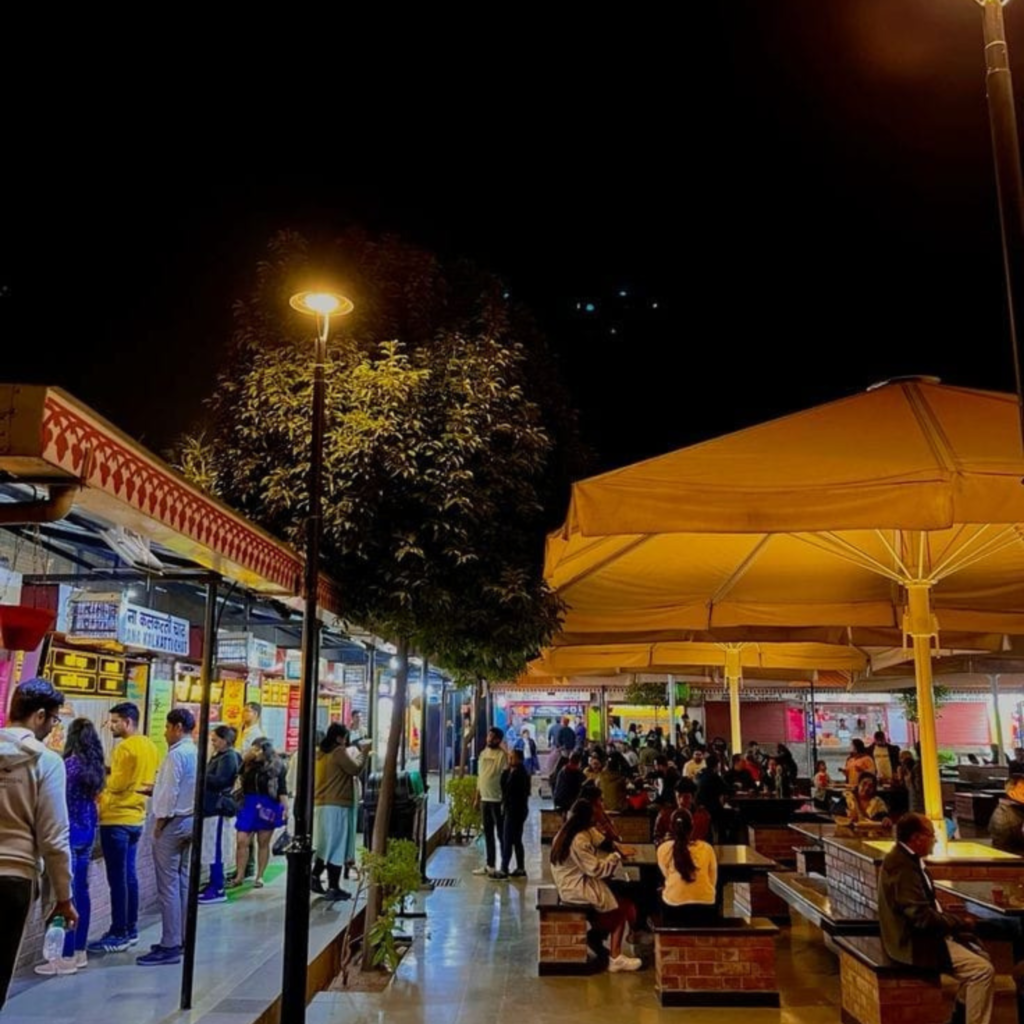
Masala Chowk
Masala Chowk in Jaipur is a popular open-air food court located in the heart of the city, specifically within the Ram Niwas Garden. It was established to bring together various local street food vendors under one roof, making it a one-stop destination for food lovers to enjoy authentic Rajasthani street food and delicacies. Masala Chowk has become a must-visit place for foodies who want to experience Jaipur’s street food culture in one convenient, vibrant, and hygienic setting.
Chokhi Dhani
Chokhi Dhani in Jaipur is an ethnic village resort that offers an immersive Rajasthani cultural experience, featuring traditional cuisine, folk performances, camel rides, and vibrant handicrafts. It’s an ideal destination for travelers wanting to experience the essence of Rajasthan’s rural lifestyle and heritage.
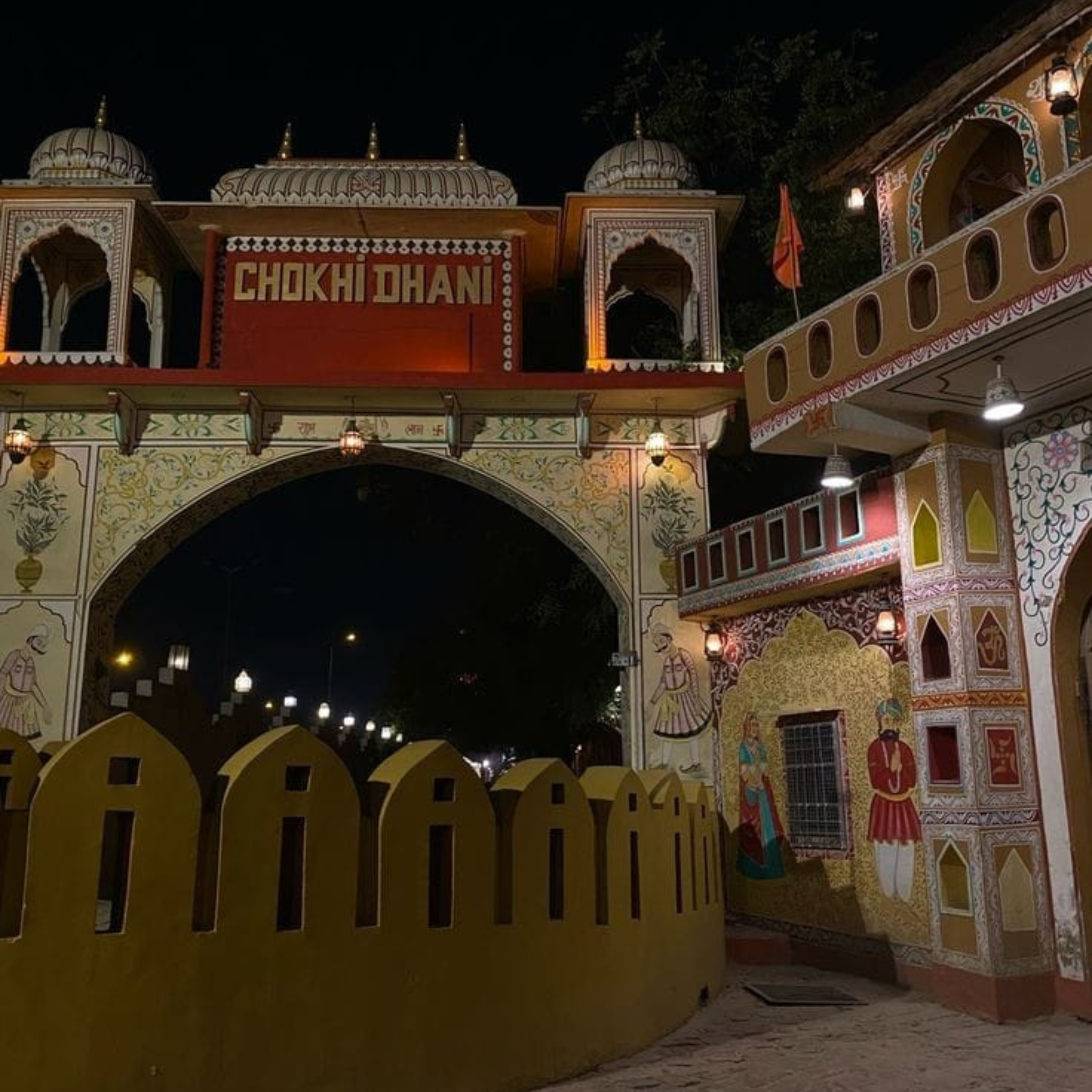

Rambagh Palace
Rambagh Palace in Jaipur, India, is a stunning heritage hotel that was originally built in 1835 as a royal residence for the Maharaja of Jaipur. Designed by the renowned architect Sir Samuel Swinton Jacob, the palace reflects a beautiful blend of Mughal and Rajput architectural styles, characterized by intricate carvings, lush gardens, and ornate interiors.
The palace served as the main residence for the Maharaja until 1957, after which it was converted into a luxury hotel by the Taj Group. Today, Rambagh Palace is known for its opulent accommodations, exceptional dining experiences, and world-class service, making it a popular destination for both domestic and international travelers.
Visitors can explore the grand halls, beautiful courtyards, and the famous Mughal gardens. The palace also offers amenities such as a spa, swimming pool, and various recreational activities, ensuring a luxurious and relaxing experience for guests. The royal heritage and rich history of Rambagh Palace provide a unique glimpse into the regal lifestyle of Rajasthan’s past.
Amarapali Museum
The Amrapali Museum in Jaipur is dedicated to showcasing the rich heritage of traditional Rajasthani jewelry, particularly that of the Amrapali brand, which is renowned for its exquisite craftsmanship and designs inspired by Indian culture. The Amrapali Museum serves not only as a display space but also as a center for education and appreciation of India’s rich jewelry heritage. It’s a great place for those interested in art, culture, and design!

Must Try Food

Dal Baati Churma
Dal Baati Churma is a traditional Rajasthani dish consisting of three parts: dal (lentil curry), baati (hard, round wheat bread), and churma (a sweet mixture of crushed baati, ghee, and jaggery or sugar). It's a hearty and flavorful meal enjoyed across Rajasthan, India.

Laal Maas
Laal Maas is a spicy Rajasthani mutton curry made with red chili paste and yogurt, known for its fiery heat and bold flavors. Traditionally, it was prepared with game meat and lots of dried red chilies.

Ker Sangri
Ker Sangri is a traditional Rajasthani dish made from dried ker berries and sangri beans, cooked with spices. It's known for its tangy, spicy flavor and is a staple in desert cuisine.

Gatte Ki Sabzi
Gatte Ki Sabzi is a traditional Rajasthani curry made with gram flour (besan) dumplings cooked in a tangy yogurt-based gravy, flavored with a blend of aromatic spices. It is typically served with roti or rice.

Pyaaz Kachori
Pyaaz Kachori is a popular North Indian snack, originating from Rajasthan, consisting of a crispy, flaky pastry filled with a spiced onion mixture. It's a favorite street food, often enjoyed with chutneys or tea.

Mirchi Bada
Mirchi Bada is a popular spicy street snack from Rajasthan, India, made by stuffing green chili peppers with spiced potato filling, coating them in gram flour batter, and deep frying until crispy. It's typically served with chutneys for an extra burst of flavor.

Mawa Kachori
Mawa Kachori is a traditional Rajasthani dessert, made by deep-frying a flaky pastry stuffed with a rich mixture of mawa (sweetened condensed milk solids) and dry fruits, then soaked in sugar syrup. It offers a perfect balance of sweetness and crunch.

Ghewar
Ghewar is a traditional Rajasthani dessert, made from flour, ghee, and sugar syrup, often served during festivals like Teej and Raksha Bandhan. It has a distinctive honeycomb texture and is typically garnished with saffron, dry fruits, and silver leaf.

Besan Chilla
Besan Chilla is a savory Indian pancake made from gram flour (besan) mixed with spices and vegetables, often enjoyed as a nutritious breakfast or snack. It's a quick and healthy dish, rich in protein and fiber.

Feeni
Fenni is a traditional Finnish spirit, often made from malted barley and flavored with juniper berries. It's typically produced in small batches and has a distinct, aromatic taste that reflects its natural ingredients.

Rajasthani Lassi
Rajasthani lassi is a traditional yogurt-based drink from Rajasthan, known for its rich, creamy texture, often flavored with cardamom, saffron, and topped with a layer of malai (cream). It's a refreshing beverage, perfect for hot climates.

Churma Ladoo
Churma Ladoo is a traditional Indian sweet made from coarsely ground wheat, jaggery, and ghee, often flavored with cardamom and garnished with nuts.
SHOPPING

Johari Bazaar
Johari Bazaar in Jaipur is a vibrant market renowned for its exquisite jewelry, particularly traditional Rajasthani designs, gemstones, and handicrafts. It's a must-visit for anyone looking to experience the rich cultural heritage and craftsmanship of the region.
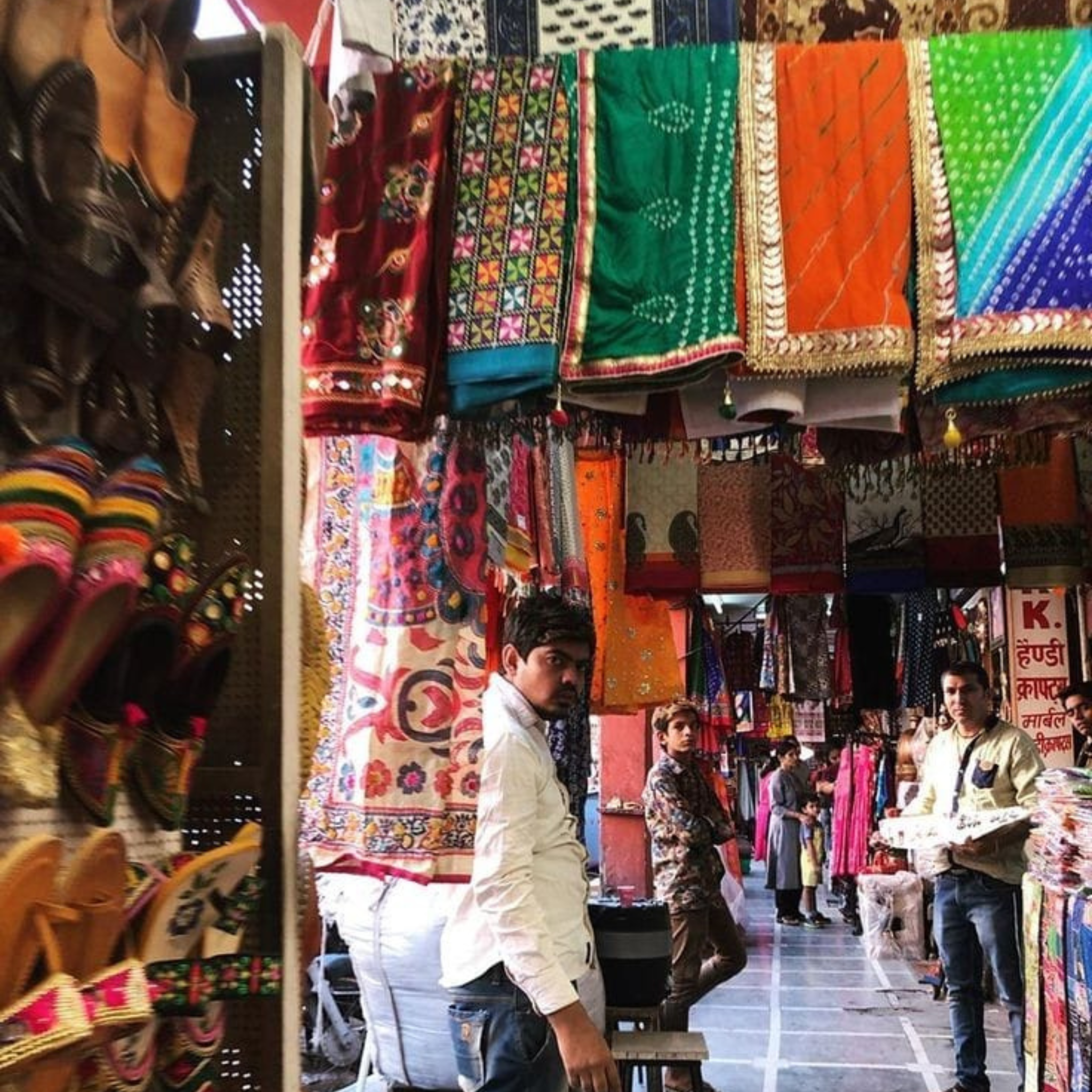
Bapu Bazaar
Bapu Bazaar in Jaipur is a vibrant market known for its colorful textiles, handicrafts, and traditional Rajasthani souvenirs. It's a popular destination for both locals and tourists seeking unique shopping experiences and a taste of local culture.

Tripolia BazaaR
Tripolia Bazaar in Jaipur is a vibrant market known for its traditional Rajasthani handicrafts, textiles, and jewelry. It's a great place to experience the local culture and shop for unique souvenirs.

Chandpole Bazaar
Chandpole Bazaar in Jaipur is a vibrant marketplace known for its colorful shops selling traditional handicrafts, textiles, and jewelry. It's a great spot for locals and tourists to experience the lively atmosphere and shop for authentic Rajasthani souvenirs.

Nehru Bazaar
Nehru Bazaar in Jaipur is a vibrant market known for its colorful handicrafts, textiles, and traditional Rajasthani clothing. It's a popular destination for both locals and tourists seeking unique souvenirs and a taste of local culture.

Sireh Deori Bazaar
Sireh Deori Bazaar in Jaipur is a vibrant market located near the iconic Hawa Mahal, known for its colorful handicrafts, textiles, and traditional Rajasthani items like footwear, bags, and souvenirs. It’s a popular spot for tourists to experience the local culture.
